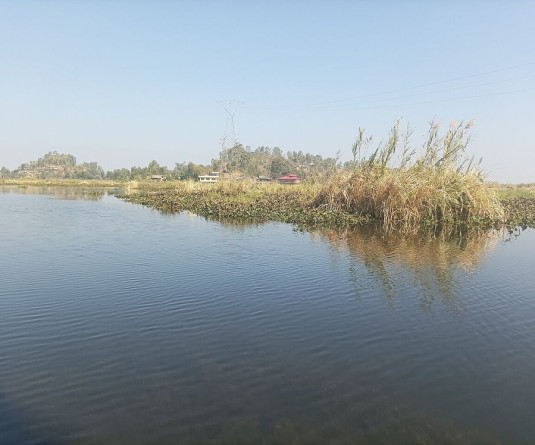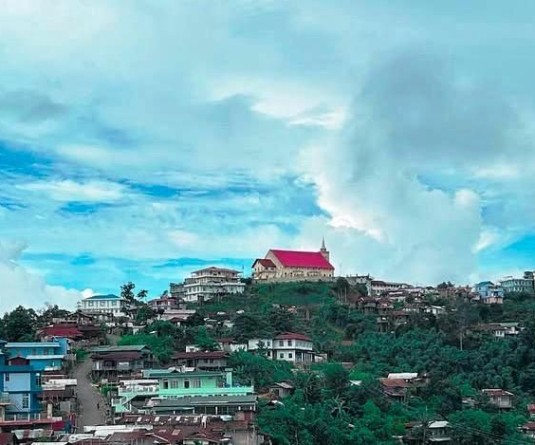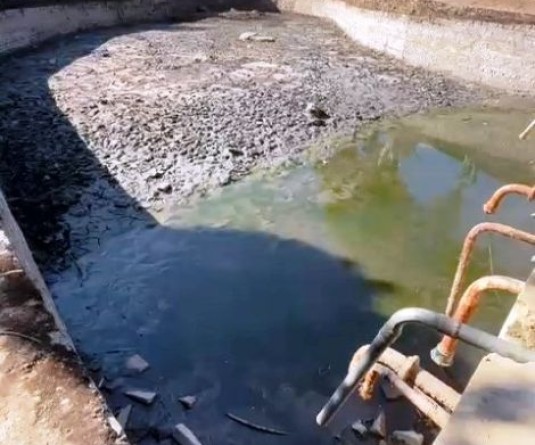
Robert A. Silverstein*
I have listed a few books below that are directly related to the topic, abbreviated the titles, and I refer to the abbreviated titles in the body of my document, below. Also, I will refer to other materials not listed below
• Andrews, C. F. India and the Simon Report. New York: Macmillan, 1930. Simon.”
• Berlin, Isaiah. “Nationalism: Past Neglect and Present Power.” In Against the Current: Essays in the History of Ideas, pp. 333-55. Edited by Henry Hardy. London: Hogarth Press. 1979. “Ideas.”
• Chakravarti, Sudeep. Highway 39: Journeys through a Fractured Land. New Dehi: Fourth Estate. 2012. “39.”
• Fraser, Steve. The Age of Acquiescence: The Life and Death of American Resistance to Organized Wealth and Power. New York. Little, Brown and Company. 2015. “Age.”
• Glancey, Jonathan. Nagaland: A Journey to India's Forgotten Frontier. London: Faber and Faber. 2011. “Journey.”
• Hedges, Chris. Wages of Rebellion. New York. Nation Books. 2015. “Wages.”
• Iralu, Kaka D. The Naga Saga: A Historical Account of the Sixty-two Years Indo-Naga War and the Story of Those Who Were Never Allowed to Tell It. Third Edition. Kohima. Kaka D. Iralu. 2009. “Saga.”
• Kire, Easterine. Bitter Wormwood. New Delhi. Zubaan. 2011. “Bitter.” • Lotha, Abraham. The Raging Mithun: Challenges of Naga Nationalism. Tromso, Norway. Barkweaver. 2013. “Mithun.”
• I begin with two presumptions: First, I'll presume, for the sake of argument, that the Nagas have established a valid case for their own nation-state.
• Second, I'll presume that violence of any sort is out of the question in pursuit of the goal of a Naga nation-state.
• (For the remainder of this paper when I refer to Naga's aspirations for an independent nation-state I will simply use the word “nation” for nation-state, and when I use the word “you” I will mean the Naga people.)
• A statement about history. Saga is, for the most part, a history of atrocities by the Indian government over a period of decades against the Naga people. Focusing on atrocities in the Indian-Nagaland context is irrelevant, no matter how tragic these atrocities were. In fact, those trying to prevent a solution will perpetrate atrocities to foment distrust.
Based on the above, I will not consider the history of atrocities in my analysis of the situation now.
• Sir Isaiah Berlin, the great historian of ideas, defined a nation thus: “... the essential human unit in which man's nature is fully realised [sic] is … the nation; that it is to the creation and maintenance of the nation that the lives of subordinate units, the family, the tribe, the clan, the province, must be due, for their nature and purpose, what is often called their meaning, are derived from its nature and its purpose; and that these are revealed not by rational analysis, but by special awareness, which need not be fully conscious, of the unique relationship that binds individual human beings into the indissoluble and unanalysable [sic] organic whole … which for nationalists is, and can only be, the nation, whether its social structure or form of government.” Ideas, 342.
• Based on the above, it strikes me that the Naga people have a very weak argument that they are a nation. The tribal history of the Nagas indicates that the members of the Angami, Ao, or other sub-tribes have a stronger attraction to those sub-tribes than to the Naga people as a whole. Even Iralu states, “The world, for the Nagas[,] was his village. Saga, 83.
The relevant issue is whether the Naga sub-tribes relate to each other like the immigrant groups who emigrated to countries like the USA, all of whom generally wanted to lose their previous European or Asian or Latin American tribal identities and assimilate. The sub-tribes of Nagaland certainly do not want to assimilate
• For Naga nationalists, “The issue is between two separate entities [India and all the Naga people]. And so, it cannot be looked at from the perspective of the Indian Constitution.” 39, 351.
But, I must emphasize, that the goal in politics is not total victory but what is in fact possible. To state such things prior to negotiations as, “... if India wants to have any dialogue with the Nagas, … [i]t can only be within the framework of the Naga Plebiscite of 1951[,]” Saga, 21, is not helpful or realistic.
Iralu states, “India must get this very clear that the Nagas will never ever give up or surrender their inalienable rights. This is more so because we have paid too dearly in blood and tears for those rights. …. Should India refuse to acknowledge the Naga rights and instead choose to continue the war with her military might, she must remember that Nagaland will not bleed alone.... she will always be Nagaland's companion in that bleeding and that weeping.” Saga, A NOTE TO THE READER, [my page numbered 3].
Does Iralu really mean this? Words are cheap. Are you willing to “bleed” India for the sake of Naga rights? Nagas must seriously question what those “inalienable rights” that Iralu referred to are.
Are things bad in Nagaland? Yes. But realistically how bad?
What of the Adivasi on the Indian mainland? What of the dalits? What of the Muslims and Christians?
Nagas have an obligation to look at their situation as objectively as possible before threatening unending bloodshed if they do not get exactly what they want. The issue always is, what is realistic, who is to pay the price of idealism, who is to do the bleeding, etc.
• “The truth is that anti-Catholicism is still the staple food for many people in Nagaland.” Mithun, 88. This article was published July 27, 2010. What is the situation now? Is this another factor that will stop the Nagas from working together if in fact they try to work toward their own nation?
• Paralleling the above, is this reality. “Nowadays, the Indian Army and the Assam Rifles barely need to take up arms. Sadly, this is because the Nagas have been doing the job for them, tearing themselves apart. Today there exists a political and military stalemate of sorts among the various Naga factions.... What violence remains in Nagaland is almost entirely internecine, while independence seems as far off as ever it did.” Journey, 199.
• On 10 May, 2015 I met, and talked (through a translator) for a number of hours, with L. Kaiso, the NNC Secretary, at the Chedima Peace Camp. I afterward found out that he and the NNC are considered traitors by some nationalists for the signing of the 1964 cease-fire.
• It must be remembered that for many Nagas, prominent and otherwise, “The struggle of the Naga nation is about creating a better future for the Nagas whether within or outside the Indian state.” Mithun, 67. An insightful and wise speech is at the end of the novel by Easterine Kire, Bitter Wormwood. It is by Niketu Iralu, and says, in part, “Nagas have done virtually nothing to speak to the minds and hearts of the Indian people whose understanding alone can solve the problem [of the status of Nagaland and its fight for sovereignty]. Bitter, 262. See whole speech: 258-269.
• I will now address the main issues necessary to obtain national independence. First, the military issue. It is obvious that China is a potential threat to India. In 1962 the China war with India proved that.
The Israelis, a good analogy, have, at times, justified their occupation of the West Bank in terms of security, in relation to having a buffer between Israel proper and Arab countries. It has been argued, and I believe correctly, that possession of the West Bank by Israel is more of a liability to Israel than an asset in case of war. It would require that Israel use much of the Israeli armed forces to spend precious resources on protecting the settlers on the West Bank.
Is Nagaland a buffer and an asset for India in a major war? I suggested to Secretary Kaiso, and I suggest now, that nationalists do research on line to find military think tanks outside India to address the issue of Nagaland as a buffer for, and an asset to, India.
• Second, the issue of precedent. This is the issue that India is concerned with most, that if Nagaland is given its freedom, then other minorities (e.g., Sikhs, the entity of the Kashmir Valley, other states and tribes on the mainland) will demand the same thing, which will endanger the integrity and survival of India.
I know that Iralu and others have argued that this is in fact a simple issue because of the nature of the Naga people, for instance being a different race, religion, and culture than other groups demanding independence in India.
This is a weak argument, not necessarily on the merits, but related to the facts on the ground. Most Indians aspiring to be a separate nation will not view the Naga demands as unique, but will treat such demands as a precedent for them.
• (A third issue for India would be the loss of the mineral rights to oil and other valuable commodities upon independence. This, like the military issue, is allegedly able to be resolved by treaty prior to independence, with a sharing agreement, as with the positioning of troops or other military units in Nagaland.
The problem with that is having Nagaland as part of the federal system, as it is now, allows for substantial more control over these issues than dealing with an alleged violation of a treaty between India and an independent Nagaland, where the UN and other international or regional bodies might intervene on behalf of Nagaland.)
• The integrity of India is a key issue which, despite the views of Nagas that it is not a serious problem in relation to other groups wishing for an independent state within the borders of India, is in fact a critical issue to India and is, in my opinion, insurmountable.
• Despite the skepticism I have expressed above on the chances of success for a separate nation for the Naga people, I will now touch on what it would take to attempt such a goal. First, it is my opinion that this attempt would be a radical or revolutionary goal similar to the one that took place over decades by India to free itself from the United Kingdom.
“Any revolutionary movement that builds a mass following will have to contend with the kind of state-orchestrated vilification and vigilante violence that plague[s] [the lives of those who attempt such movements]. Vitriol and violence will be unleashed, with the tacit approval of the state, on all who resist, even nonviolently. These reactionary movements, while defining themselves as the guardians of patriotism …, will draw on the deep reserves of racial hostility.” Wages, 160.
• This is just the Indian state I'm referring to above. There are much more serious issues a potential mass movement would have to contend with. Nagaland has one of the highest percentages of people in an Indian state who are members of a “scheduled tribe.” Many of these people, perhaps most, have taken advantage of the educational and vocational benefits given to those designated as members of a scheduled tribe. More importantly, many want their children to take advantage of these things.
• The vast majority of people in Nagaland are comfortable enough under the present laws that they will not risk all of their benefits to gain a separate nation. Also, the corruption in Nagaland is endemic (in 2007 “...the third most corrupt state in the country.” Mithun, 106). All those people who are “on the take,” have a vested interest in the present system and will not want to change the status quo and risk their gains under the present system.
Moreover, many former insurgents have now morphed into gangs cynically using the movement to extort money from small businesses and the Nagaland government seems helpless to stop this sort of violent extortion.
• There is only one hope to address the immediately preceding points; “If … [Nagaland] could find ...some God-given moral genius who could stir up, not in one province only, but throughout the whole … [state], the spirit of moral revolt and independence, then there might be some hope. If … [Nagaland] could produce, out of her own store of inner resources, such an inspiring and unifying personality, then … [independence might be possible].” Simon, 119.
I don't see such a person on the Naga horizon. There is no Phizo in the wings. The people are comfortable, daily life has improved in the last generation or two, and it is improbable to expect them to risk all for a cause that probably is not winnable and, even if winnable, may not be worth the price, despite fantasies to the contrary.
• CONCLUSION. It is my opinion that the Naga dream of having a sovereign nation is, at best, a long shot, and, at worst, an easy diversion from the real work that can be accomplished with the determination of the population to improve the life of most Nagas. That work, more realistic than the fantasy of sovereignty, is, for example, to deal head on with the endemic corruption in Nagaland, so that roads that are to be repaired get repaired, and that other infrastructure gets built with the money sent to the state government from the Center rather than going into the pockets of the state bureaucrats, private contractors, et al.
• (I have had the dubious pleasure of traveling the road from Dimapur to Kohima and back many times, and it seems to me that the road might have been in better shape under Slim, Stoppard, and Grover during the Battle of Kohima in April 1944 than it is now. The fact that it is the main artery from your only airport to your capital is a disgrace. A state that cannot even properly maintain its most important road is not a state that should be aspiring to be a separate nation.)
• There is no reason to believe that the Nagas who are now corrupt, purchased by Indian largess, or extortionists of their own people should all of a sudden see the light and reform just because they are a sovereign nation. The more limited but realistic goal should be to energize a few good people to run for political office, win, and clean up state government.
• Nagas may say that it is better to have a corrupt nation which is at least yours than a corrupt state within a nation whose majority of citizens look down upon, even despise, you. Perhaps. But Nagas should ask the African-American community in the USA about that.
As our first black president finishes his second term in office, and as most blacks in our country have ancestors who were literally slaves, I think there has been some improvement in most of their lives. And that improvement has been within a still racist country, like India in some ways. The fight in Nagaland is not easy, but if American blacks can do it, Nagas can do it, within India more successfully than outside it.
*The author is a retired Criminal defense lawyer and a former Military Police officer. Upon retirement he finished nursing school and practiced on a medical-surgical floor of a local hospital. He has also done voluntary service in different parts of India.
The author completed his M.A. Degree in Politics at New York University in 1978 and his M.Phil. Degree in Politics at Oxford University, Oxford, England in 1980.






